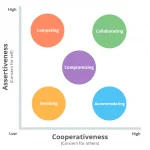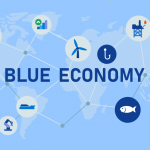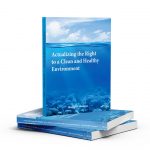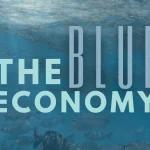News & Analysis
The Use of Technology for Inclusive and Quality Education in Kenya
Published
2 years agoon
By
Admin
By Dr. Kariuki Muigua, PhD (Leading Environmental Law Scholar, Policy Advisor, Natural Resources Lawyer and Dispute Resolution Expert from Kenya), Winner of Kenya’s ADR Practitioner of the Year 2021, ADR Publisher of the Year 2021 and CIArb (Kenya) Lifetime Achievement Award 2021*
The advances in technology driven by globalization and digital transformation have impacted education sector and how teachers interact with students and how knowledge and skills are acquired and applied. In that way, technology has become an important component of education. In fact, the need for use of technology in education has become pronounced during the COVID-19 pandemic as online education increasingly became the norm and vital part of teaching and learning for many teachers and students. As such, technology has great potential to help deal the some if not most of the challenges facing the education sector in the country relate to affordability, availability, and accessibility.
Some of these challenges may be solved by integrating information technology in the education system delivery mode. As technological advancements take root across the world, teaching and learning are moving towards the adoption of certain types of digital learning concepts, where new methods of learning will replace traditional individual classroom learning. Recent studies conducted in developed countries on the impact of technology in learning, focusing on remedial and low-achieving students, have shown gains of 80 percent for reading and 90 percent for math when computers were used to assist in the learning process; multimedia instruction models, aided by digital learning, found to save more time by up to 30 percent compared with conventional teaching methods such as board and chalk; and technology also improved achievement and cost savings of 30 to 40 percent, and had a direct positive link between the amount of interactivity provided and instructional effectiveness.
Students using technology as an education tool become more engaged in the process and more interested in growing their knowledge base. Interactive solutions also boost retention rates and test scores, being far more engaging and memorable than voluminous textbooks; provide better context, a greater sense of perspective, and more arresting activities that allow them to better connect with students, and also frequently offer a more interesting and involving way to assimilate information. Digital learning has thus been found to offer an unprecedented ability to provide educational experiences that are tailor-made for each student.
According to reports by the UNDP, school closures have affected over 90 percent of the world’s student population — 1 .6 billion children and youth. As a result, accounting for the inability to access the internet for remote learning, this could result in out-of-school rates in primary education not seen since the mid-1980s, setbacks that are especially worrisome as they can translate into life-long deficits, perpetuating inequalities across generations. Remote access to education by students has never been more needed than during the COVID-19 pandemic period. It is estimated that during the COVID-19 pandemic, many schools are offering remote learning to students through virtual classrooms to mitigate the impact of school closures. However, while this is an option for some, it is out of reach for many who lack access to computers and the Internet at home, as well as a low level of computer-related skills, all of which put many already marginalized students at a further disadvantage.
It is therefore imperative that the government salvages the situation and avoid more children being affected through continuous investment in and full implementation of the government’s Digital Literacy Programme which will see more children especially from the marginalized and far-flung areas in the country. The programme which was started by the government in 2013 aims at ensuring pupils in standard one to three can use digital technology and communication tools in learning with an overarching objective of transforming learning in Kenya into a 21st Century education system.
Considering that the tablets and other gadgets meant for the Programme are being assembled locally by the Jomo Kenyatta University of Agriculture and Technology (JKUAT) and Moi University, there is a need for these universities and other institutions of higher learning to be supported through funding and political goodwill as well as through cooperation with international organizations and initiatives such as Higher Education Sustainability Initiative (HESI) to make these initiatives more successful. Notably, The Digital Literacy Programme “Digischool” is also considered as a key deliverable under the Kenya Vision 2030. The adoption of robust curricula that provides for quality education and training is the key to the transformation of the country through technological innovation and the shift from knowledge reproduction to knowledge production which will eventually empower learners and communities as part of sustainable development.
There is a higher need than ever before for the Government to concentrate more on investment in education and training technology as part of its efforts towards the realization of sustainable development agenda and the country’s development blueprint, Vision 2030. If the right to quality and inclusive education for individual and community empowerment is to be realized, then there is a need for strong national legal and policy frameworks that lay the foundation and conditions for the delivery and sustainability of good quality education. Education holds great potential in addressing most of the problems that slow down the realization of sustainable development goals and eventual empowerment of individuals, such as poverty, injustice, inclusivity, environmental degradation, among others. Inclusive and quality education is indeed a tool for empowerment for the present and future generations.
*This article is an extract from the Article: “Towards Inclusive and Quality Education as a Tool for Empowerment in Kenya,” (2021) Journal of Conflict Management and Sustainable Development Volume 6(1), p. 83 by Dr. Kariuki Muigua, PhD, Kenya’s ADR Practitioner of the Year 2021 (Nairobi Legal Awards), ADR Publisher of the Year 2021 and ADR Lifetime Achievement Award 2021 (CIArb Kenya). Dr. Kariuki Muigua is a foremost Environmental Law and Natural Resources Lawyer and Scholar, Sustainable Development Advocate and Conflict Management Expert in Kenya. Dr. Kariuki Muigua is a Senior Lecturer of Environmental Law and Dispute resolution at the University of Nairobi School of Law and The Center for Advanced Studies in Environmental Law and Policy (CASELAP). He has published numerous books and articles on Environmental Law, Environmental Justice Conflict Management, Alternative Dispute Resolution and Sustainable Development. Dr. Muigua is also a Chartered Arbitrator, an Accredited Mediator, the Africa Trustee of the Chartered Institute of Arbitrators and the Managing Partner of Kariuki Muigua & Co. Advocates. Dr. Muigua is recognized among the top 5 leading lawyers and dispute resolution experts in Kenya by the Chambers Global Guide 2022.
References
Global Partnership for Education, ‘Why Africa Needs to Ensure Inclusive and Equitable Quality Education and Lifelong Learning for All,’ https://www.globalpartnership.org/blog/why-africa-needs-ensure-inclusive-and-equitable-quality-education-and-lifelong-learning-all (accessed 7 December 2020).
Kigondu Nicholas, ‘NGEC Calls for Proactive Action to Protect Persons with Disabilities’ (KBC | Kenya’s Watching, 2 December 2020) https://www.kbc.co.ke/ngec-calls-for-proactive-action-to-protect-persons-with-disabilities/ (accessed 6 December 2020).
Plan International, ‘The Right to Inclusive, Quality Education’ (Plan International) https://plan-international.org/education/right-inclusive-quality-education (accessed 7 December 2020).
Roger Slee, Defining the Scope of Inclusive Education Think Piece Prepared for the 2020 Global Education Monitoring Report Inclusion and Education 2 (2019).
UNICEF and UNESCO (eds), A Human Rights-Based Approach to Education for All (UNICEF 2007), 7 < https://unesdoc.unesco.org/ark:/48223/pf0000154861> (accessed 6 December 2020)
UN Committee on Economic, Social and Cultural Rights (CESCR), General Comment No. 13: The Right to Education (Art. 13 of the Covenant), 8 December 1999, E/C.12/1999/10.
UN General Assembly, Transforming our world: the 2030 Agenda for Sustainable Development, 21 October 2015, A/RES/70/1.
- March 23, 2024
You may like
-


The Challenges in Actualizing Sustainable Blue Economy in Kenya
-


The Meaning of Blue Economy in Kenyan Context
-
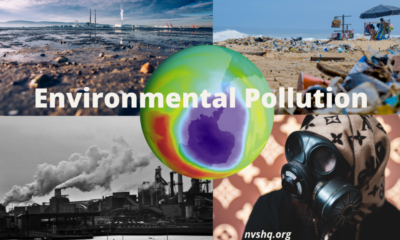

The Meaning of Environmental Pollution in Kenya
-


Overview of Human Right to Clean, Safe and Healthy Environment
-


What Issues are Required for ESG Reporting in Kenya?
-


Value Creation as an ESG Management Strategy
News & Analysis
Review: Alternative Dispute Resolution (ADR) Journal, Volume 12(3), 2024
Published
2 months agoon
April 28, 2024
The Alternative Dispute Resolution (ADR) Journal, Volume. 12, No.3, 2024 covers pertinent and emerging issues across all ADR mechanisms. This volume exposes our readers to a variety of salient topics and concerns in ADR including Building Peace in Africa, Public Policy as a Ground of Setting-Aside an Arbitral Award, Ethics, Integrity and Best Practice in Mediation, Accessing Justice in Kenya, Sports Arbitration, ESG Arbitration, Arbitration of Investor-State Dispute in Kenya, Article 159(2) of the Constitution of Kenya 2010 and issuance of interim measures by Arbitral Tribunals. The ADR Journal is a publication of the Chartered Institute of Arbitrators, Kenya Branch. It provides a platform for scholarly debate and in-depth investigations into both theoretical and practical questions in Alternative Dispute Resolution.
The journal is edited by Professor of Law at the University of Nairobi, Faculty of Law Hon Prof. Kariuki Muigua, a distinguished law scholar, an accomplished mediator and arbitrator with a Ph.D. in law from the University of Nairobi and widespread training and experience in both international and national commercial arbitration and mediation. Prof. Muigua is a Fellow of Chartered Institute of Arbitrators (CIArb)- Kenya chapter and also a Chartered Arbitrator. He is a member of the Permanent Court of Arbitration, The Hague. He also serves as a member of the National Environment Tribunal. He has served as the Chartered Institute of Arbitrator’s (CIArb- UK) Regional Trustee for Africa from 2019 -2022.
In the paper “Building Peace in Africa through Alternative Dispute Resolution” Hon. Prof. Kariuki Muigua critically discusses the role of Alternative Dispute Resolution (ADR) mechanisms in peace building in Africa. The paper argues that ADR mechanisms can play a fundamental role in building peace in Africa. The paper further posits that ADR mechanisms are able to enhance sustainable peace in Africa due to their focus on reconciliation and restorative justice. It proposes solutions towards building peace in Africa through ADR.
In “the Emergence of the International Commercial Court: A Threat to Arbitration of Investor-State Dispute in Kenya” Marion Injendi Wasike and Dr. Kenneth W. Mutuma argue that the proliferation of international commercial courts, including their introduction in Kenya, necessitates a thorough analysis of their implications on arbitration’s role in investor-state disputes. By juxtaposing these emerging judicial entities against traditional arbitration paradigms, the discussion aims to unravel the complexities and potential shifts in dispute resolution preferences, highlighting the balance between innovation in legal adjudication and the sustenance of arbitration’s revered position in the international legal order.
Kamau Karori SC, MBS in “Striking a Balance: A Delicate Dance Between Sanctity and Scrutiny” notes that the continuing debate —between upholding the inviolability of arbitral awards and judicial intervention in cases of egregious injustice points to the need for delicate balancing between non-interference and the need to correct unmistakably unjust awards. The urgency of this discourse is informed by the need to prevent consumers or potential consumers of arbitration services opting to exclude arbitration clauses due to perceived deficiencies. The article seeks to navigate the genesis of the debate, delicately dissect the different perspectives, and draw comparisons with global practices.
The article “Reforming Kenya’s Law on Probation and Aftercare Services to Promote Alternative Dispute Resolution” by Michael Sang engages in a comprehensive exploration of Kenya’s Probation of Offenders Act within the context of the growing role of Alternative Dispute Resolution (ADR) principles in the nation’s criminal justice system. Drawing inspiration from international legal instruments such as “The Beijing Rules,” “Bangkok Rules,” and “Tokyo Rules,” the study evaluates the Act’s provisions, strengths, and limitations. It concludes with a call for thoughtful reforms that align Kenya’s criminal justice system with international standards, emphasizing a balanced and compassionate approach to justice.
The “Upholding Ethics, Integrity and Best Practice in Mediation” by Hon. Prof. Kariuki Muigua, OGW critically discusses the need for standardization of mediation practice in Kenya by adopting best practices. It examines some of the challenges facing mediation practice in Kenya. It is also explores measures adopted towards fostering best practices in mediation at both the global and national level. The paper further suggests recommendations aimed at upholding ethics, integrity and best practice in mediation. In “Exploring the Role of Mediation in Promoting Small and Medium Enterprises (SMEs) and Fostering Economic Growth in Kenya” Atundo Wambare offers an in-depth analysis of the use of mediation in promoting the growth of small and medium enterprises (SME’s). He makes recommendations on how best mediation can be harnessed as a tool for economic growth in Kenya.
James Njuguna and Nyamboga George Nyanaro in “Compulsory Resolution or Autonomy Erosion? The Debate on Mandatory Sports Arbitration delve into the contentious issue of mandatory sports arbitration, questioning its role as a potential future pathway for dispute resolution. Their research examines the implications of compulsory arbitration on athletes’ autonomy, juxtaposing it with the benefits of expedited dispute resolution.
Paul Ngotho in “Constitution of Kenya 2010 Article 159.2.(c): Ancestry, Anatomy, Efficacy & Legacy” traces the rather odd origin and everlasting effect of the often-cited Article 159.2.(c) of the Constitution of Kenya 2010. It acknowledges the central role played by two members of the Chartered Institute of Arbitrators Kenya Branch, quietly and privately, away from the mainstream constitution making process. One of them chairman of the Branch, the other the Minister of Justice, National Cohesion and Constitutional Affairs.
David Onsare in “Navigating The ESG Maze: Emerging Trends in Arbitration and Corporate Accountability” embarks on a timely exploration of the dynamic interplay between Environmental, Social and Governance (ESG) factors and arbitration, a field gaining critical importance in the realm of corporate accountability. By offering a comprehensive view of the complexities and practical implications of ESG in arbitration, the article serves as a crucial guide for legal professionals navigating the evolving landscape of corporate responsibility and arbitration. In “Public Policy as a Ground of Setting-Aside an Arbitral Award: Musings on the Centurion Engineers Civil Appeal Judgment”
Ibrahim Kitoo argues a case for upholding of public policy as a ground for the nonrecognition, non-enforcement and setting aside of an arbitral award in cases where to recognise and enforce such awards proves to be a clear violation of the law and against the public good. Juvenalis Ngowi in “Arbitral Tribunals: Do they have the power to issue interim measures during the proceedings?” discusses the powers of the Arbitral Tribunal to grant such orders and examines some procedural rules which empower arbitrators to issue such orders, the scope of those powers, and the factors to be considered when granting interim measures in the arbitral proceedings.
In “Examining the Efficacy of Mediation as A Tool for Accessing Justice in Kenya: Opportunities, Challenges, and Future Perspectives” Murithi Antony undertakes a thorough examination of mediation as a form of ADR in the Kenyan context. He identifies opportunities arising from the integration of mediation into the country’s legal system and explores barriers impeding its widespread adoption. The article concludes with a resounding call to action for all stakeholders to champion the use of mediation collaboratively and proactively, given its proven efficacy in dispute resolution.
Kariuki Muigua & Company Advocates is a Top-Tier Kenyan law firm situated at the heart of Nairobi city in Kenya. We are a broad-based practice with a reputation for offering a full range of quality services to our domestic and international clients.
At KM&CO, we take pride in offering personalized attention to our diverse clientele. Our practice aspires to offer efficient and cost-effective legal solutions that meet our esteemed clients’ needs in a timely and competent manner.
KM&CO was founded in 1993 by the current senior Advocate, Dr. Kariuki Muigua. It is based in the Central Business District of Nairobi at the Pioneer Assurance House located opposite 7th August Bomb Blast Memorial Park enjoying the convenience of close proximity to major financial, commercial and governmental institutions.
We are open for consultations with our clients worldwide; we have lawyers on standby for 24 hours to cover diverse time zones that impact on our global clients.
News & Analysis
Way Forward in Applying Collaborative Approaches Towards Conflict Management
Published
3 months agoon
March 24, 2024
By Hon. Prof. Kariuki Muigua, OGW, PhD, C.Arb, FCIArb is a Professor of Environmental Law and Dispute Resolution at the University of Nairobi, Member of Permanent Court of Arbitration, Leading Environmental Law Scholar, Respected Sustainable Development Policy Advisor, Top Natural Resources Lawyer, Highly-Regarded Dispute Resolution Expert and Awardee of the Order of Grand Warrior (OGW) of Kenya by H.E. the President of Republic of Kenya. He is the Academic Champion of ADR 2024, the African ADR Practitioner of the Year 2022, the African Arbitrator of the Year 2022, ADR Practitioner of the Year in Kenya 2021, CIArb (Kenya) Lifetime Achievement Award 2021 and ADR Publisher of the Year 2021 and Author of the Kenya’s First ESG Book: Embracing Environmental Social and Governance (ESG) tenets for Sustainable Development” (Glenwood, Nairobi, July 2023) and Kenya’s First Two Climate Change Law Book: Combating Climate Change for Sustainability (Glenwood, Nairobi, October 2023), Achieving Climate Justice for Development (Glenwood, Nairobi, October 2023), Promoting Rule of Law for Sustainable Development (Glenwood, Nairobi, January 2024) and Actualizing the Right to a Clean and Healthy Environment (Glenwood, Nairobi, March 2024)*
It is necessary to embrace and utilize collaborative approaches in managing conflicts. These techniques include mediation, negotiation, and facilitation. These mechanisms are effective in managing conflicts since they encourage parties to embrace and address disagreements through empathy and listening towards mutually beneficial solutions. Collaborative approaches also have the potential to preserve relationships, build trust, and promote long term positive change. They also ensure a win-win solution is found so that everyone is satisfied which creates the condition for peace and sustainability. These approaches are therefore ideal in managing conflicts. It is therefore important to embrace collaborative approaches in order to ensure effective management of conflicts.
In addition, it is necessary for third parties including mediators and facilitators to develop their skills and techniques in order to enhance the effectiveness of collaborative approaches towards conflict management. For example, it has correctly been observed that mediators and facilitators should listen actively and empathetically in order to assist parties to collaborate towards managing their dispute. Therefore, when a dispute arises, the first step should involve listening to all parties involved with an open mind and without judgment. This should entail active listening, which means paying attention to both verbal and nonverbal cues and acknowledging the emotions and perceptions involved.
It has been observed that by listening empathetically, a third party such as a mediator of facilitator can understand each person’s perspective and start to build a foundation for resolving the conflict through collaboration. In addition, while collaborating towards conflict management, it is necessary to encourage and help parties to focus on interests and not positions. It has been pointed out that focusing positions can result in a standstill which can delay or even defeat the conflict management process. However, by identifying and addressing the underlying interests parties can find common ground and collaborate towards coming up with creative solutions towards their conflict.
Mediators and facilitators should also assist parties to look for areas of agreement or shared goals. Identifying a common ground can build momentum and create a positive environment for resolving the conflict. Further, in order to ensure the effectiveness of collaborative approaches in conflict management, it is necessary to build strong collaboration. It has been asserted that strong collaboration can be achieved by establishing a shared purpose, cultivating trust among parties, encouraging active participation by all parties, and promoting effective communication.
Strong collaboration enables parties to develop trust between and among themselves and strengthen communication channels between the various parties. It also helps to generate inclusive solutions that arise from wider stakeholders’ views. Therefore while applying collaborative approaches, it is necessary for parties to foster strong collaboration by identifying common goals, building trust, ensuring that all stakeholders are involved, and communicating effectively in order to come up with win-win outcomes.
Finally, while embracing collaborative approaches in conflict management, it is necessary for parties to consider seeking help from third parties if need arises. For example, negotiation is always the first point of call whenever a conflict arises whereby parties attempt to manage their conflict without the involvement of third parties. It has been described as the most effective collaborative approach towards conflict management since it starts with an understanding by both parties that they must search for solutions that satisfy everyone.
It enables parties to a dispute to come together to openly discuss the issue causing tension, actively listen to each other, and come up with mutually satisfactory solutions. However, it has been correctly observed that negotiation may fail especially if the conflict is particularly complex or involves multiple parties due to challenges in collaborating. In such circumstances, where negotiation fails, parties should consider resorting to other collaborative approaches such as mediation and facilitation where they attempt to manage the conflict with the help of a third party. A mediator or facilitator can assist parties to collaborate and continue with the negotiations and ultimately break the deadlock.
*This is an extract from Kenya’s First Clean and Healthy Environment Book: Actualizing the Right to a Clean and Healthy Environment (Glenwood, Nairobi, January 2024) by Hon. Prof. Kariuki Muigua, OGW, PhD, Professor of Environmental Law and Dispute Resolution, Senior Advocate of Kenya, Chartered Arbitrator, Kenya’s ADR Practitioner of the Year 2021 (Nairobi Legal Awards), ADR Lifetime Achievement Award 2021 (CIArb Kenya), African Arbitrator of the Year 2022, Africa ADR Practitioner of the Year 2022, Member of National Environment Tribunal (NET) Emeritus (2017 to 2023) and Member of Permanent Court of Arbitration nominated by Republic of Kenya and Academic Champion of ADR 2024. Prof. Kariuki Muigua is a foremost Environmental Law and Natural Resources Lawyer and Scholar, Sustainable Development Advocate and Conflict Management Expert in Kenya. Prof. Kariuki Muigua teaches Environmental Law and Dispute resolution at the University of Nairobi School of Law, The Center for Advanced Studies in Environmental Law and Policy (CASELAP) and Wangari Maathai Institute for Peace and Environmental Studies. He has published numerous books and articles on Environmental Law, Environmental Justice Conflict Management, Alternative Dispute Resolution and Sustainable Development. Prof. Muigua is also a Chartered Arbitrator, an Accredited Mediator, the Managing Partner of Kariuki Muigua & Co. Advocates and Africa Trustee Emeritus of the Chartered Institute of Arbitrators 2019-2022. Prof. Muigua is a 2023 recipient of President of the Republic of Kenya Order of Grand Warrior (OGW) Award for his service to the Nation as a Distinguished Expert, Academic and Scholar in Dispute Resolution and recognized among the top 5 leading lawyers and dispute resolution experts in Band 1 in Kenya by the Chambers Global Guide 2024 and was listed in the Inaugural THE LAWYER AFRICA Litigation Hall of Fame 2023 as one of the Top 50 Most Distinguished Litigation Lawyers in Kenya and the Top Arbitrator in Kenya in 2023.
References
Bercovitch. J., ‘Conflict and Conflict Management in Organizations: A Framework for Analysis.’ Available at https://ocd.lcwu.edu.pk/cfiles/International%20Relations/EC/IR403/Conflict.ConflictManagementinOrga nizations.pdf (Accessed on 01/03/2024).
Bercovitch. J., ‘Mediation Success or Failure: A Search for the Elusive Criteria.’ Cardozo Journal of Conflict Resolution, Vol. 7, p 289.
Bloomfield. D., ‘Towards Complementarity in Conflict Management: Resolution and Settlement in Northern Ireland,’ Journal of Peace Research., Volume 32, Issue 2.
Burrell. B., ‘The Five Conflict Styles’ Available at https://web.mit.edu/collaboration/mainsite/ modules/module1/1.11.5.html (Accessed on 01/03/2024).
Demmers. J., ‘Theories of Violent Conflict: An Introduction’ (Routledge, New York, 2012).
Diana. M., ‘From Conflict to Collaboration’ Available at https://www.pmi.org/learning/library/conflict-collaboration-beyond-projectsuccess-1899 (Accessed on 01/03/2024).
Food and Agriculture Organization., ‘Collaborative Conflict Management for Enhanced National Forest Programmes (NFPs)’ Available at https://www.fao.org/3/i2604e/i2604e00.pdf (Accessed on 01/03/2024).
International Organization for Peace Building., ‘Natural Resources and Conflict: A Path to Mediation.’ Available at https://www.interpeace.org/2015/11/naturalresources-and-conflict-a-path-to-mediation/ (Accessed on 01/03/2024).
Isenhart. M.W., & Spangle. M., ‘Summary of “Collaborative Approaches to Resolving Conflict” ‘ Available at https://www.beyondintractability.org/bksum/isenhart-collaborative (Accessed on 01/03/2024).
Kaushal. R., & Kwantes. C., ‘The Role of Culture and Personality in Choice of Conflict Management Strategy.’ International Journal of Intercultural Relations 30 (2006) 579– 603.
Leeds. C.A., ‘Managing Conflicts across Cultures: Challenges to Practitioners.’ International Journal of Peace Studies, Volume 2, No. 2, 1997.
May. E., ‘Collaborating Conflict Style Explained In 4 Minutes’ Available at https://www.niagara institute.com/blog/collaborating-conflict-style/ (Accessed on 01/03/2024).
Miroslavov. M., ‘Mastering the Collaborating Conflict Style In 2024’ Available at https://www.officernd.com/blog/collaborating-conflictstyle/#:~:text=It’s%20one%20of%20the%20strat egies,their%20underlying%20needs %20and%20interests. (Accessed on 01/03/2024).
Muigua. K & Kariuki. F., ‘ADR, Access to Justice and Development in Kenya.’ Available at http://kmco.co.ke/wp-content/uploads/2018/08/ADR-access-tojustice-and-development-inKenyaRevised-version-of-20.10.14.pdf (Accessed on 01/03/2024).
Muigua. K., ‘Alternative Dispute Resolution and Access to Justice in Kenya.’ Glenwood Publishers Limited, 2015.
Muigua. K., ‘Reframing Conflict Management in the East African Community: Moving from Alternative to ‘Appropriate’ Dispute Resolution.’ Available at https://kmco.co.ke/wpcontent/uploads/2023/06/ Reframing-ConflictManagement-in-the-East-African-CommunityMoving-from-Alternative-toAppropriate-Dispute-Resolution (Accessed on 01/03/2024).
Muigua. K., ‘Resolving Conflicts through Mediation in Kenya.’ Glenwood Publishers Limited, 2nd Edition., 2017.
Quain. S., ‘The Advantages & Disadvantages of Collaborating Conflict Management’ Available at https://smallbusiness.chron.com/advantagesdisadvantages-collaborating-conflict-management-36052.html (Accessed on 01/03/2024).
Samuel. A., ‘Is the Collaborative Style of Conflict Management the Best Approach?’ Available at https://www.linkedin.com/pulse/collaborative-style-conflictmanagement-best-approach-samuel-ansah (Accessed on 01/03/2024).
United Nations., ‘Land and Conflict’ Available at https://www.un.org/en/landnatural-resources-conflict/pdfs/GN_ExeS_Land%20and%20Conflict.pdf (Accessed on 01/03/2024).
Weiss. J., & Hughes. J., ‘Want Collaboration?: Accept—and Actively Manage— Conflict’ Available at https://hbr.org/2005/03/want-collaboration-accept-andactively-manage-conflict (Accessed on 01/03/2024).
Kariuki Muigua & Company Advocates is a Top-Tier Kenyan law firm situated at the heart of Nairobi city in Kenya. We are a broad-based practice with a reputation for offering a full range of quality services to our domestic and international clients.
At KM&CO, we take pride in offering personalized attention to our diverse clientele. Our practice aspires to offer efficient and cost-effective legal solutions that meet our esteemed clients’ needs in a timely and competent manner.
KM&CO was founded in 1993 by the current senior Advocate, Dr. Kariuki Muigua. It is based in the Central Business District of Nairobi at the Pioneer Assurance House located opposite 7th August Bomb Blast Memorial Park enjoying the convenience of close proximity to major financial, commercial and governmental institutions.
We are open for consultations with our clients worldwide; we have lawyers on standby for 24 hours to cover diverse time zones that impact on our global clients.
News & Analysis
Opportunities and Challenges of Collaborative Conflict Management
Published
3 months agoon
March 24, 2024
By Hon. Prof. Kariuki Muigua, OGW, PhD, C.Arb, FCIArb is a Professor of Environmental Law and Dispute Resolution at the University of Nairobi, Member of Permanent Court of Arbitration, Leading Environmental Law Scholar, Respected Sustainable Development Policy Advisor, Top Natural Resources Lawyer, Highly-Regarded Dispute Resolution Expert and Awardee of the Order of Grand Warrior (OGW) of Kenya by H.E. the President of Republic of Kenya. He is the Academic Champion of ADR 2024, the African ADR Practitioner of the Year 2022, the African Arbitrator of the Year 2022, ADR Practitioner of the Year in Kenya 2021, CIArb (Kenya) Lifetime Achievement Award 2021 and ADR Publisher of the Year 2021 and Author of the Kenya’s First ESG Book: Embracing Environmental Social and Governance (ESG) tenets for Sustainable Development” (Glenwood, Nairobi, July 2023) and Kenya’s First Two Climate Change Law Book: Combating Climate Change for Sustainability (Glenwood, Nairobi, October 2023), Achieving Climate Justice for Development (Glenwood, Nairobi, October 2023), Promoting Rule of Law for Sustainable Development (Glenwood, Nairobi, January 2024) and Actualizing the Right to a Clean and Healthy Environment (Glenwood, Nairobi, March 2024)*
One of the key collaborative approaches that can be applied in conflict management is mediation. Mediation has been defined as a method of conflict management where conflicting parties gather to seek solutions to the conflict, with the assistance of a third party who facilitates discussions and the flow of information, and thus aiding in the process of reaching an agreement.
Mediation is usually a continuation of the negotiation process since it arises where parties to a conflict have attempted negotiations, but have reached a deadlock. Parties therefore involve a third party known as a mediator to assist them continue with the negotiations and ultimately break the deadlock. A mediator does not have the power to impose a solution upon the parties but rather facilitates communication, promotes understanding, focuses the parties on their interests, and uses creative problem solving to enable the parties to reach their own agreement.
Some of the core values and principles guiding mediation as a collaborative approach towards conflict management include impartiality, empathy, valued reputation, and confidentiality. It has also been pointed out that mediation has certain attributes which include informality, flexibility, efficiency, confidentiality, party autonomy and the ability to promote expeditious and cost effective management of dispute which makes it an ideal mechanism for managing disputes.
Mediation is an effective mechanism that can foster collaboration due to its potential to build peace and bring people together, binding them towards a common goal. Mediation can also foster effective management of conflicts by building consensus and collaboration. It has been argued that mediation can enhance collaboration towards conflict management due to its emphasis on the need for a mediator who listen to the wants, needs, fears, and concerns of all sides. Therefore, for mediation to be effective in fostering collaboration, the approach must be mild and non-confrontational because the goal is to make all parties feel comfortable expressing their views and opinions.
Another key collaborative approach towards conflict management is negotiation. It has been defined as an informal process that involves parties to a conflict meeting to identify and discuss the issues at hand so as to arrive at a mutually acceptable solution without the help of a third party. Negotiation is one of the most fundamental methods of managing conflicts which offers parties maximum control over the process66. It aims at harmonizing the interests of the parties concerned amicably. Negotiation has been described as the process that creates and fuels collaboration.
Negotiation fosters collaboration since it involves all parties sitting down together, talking through the conflict and working towards a solution together. Negotiation has been described as the most effective collaborative approach towards conflict management since it starts with an understanding by both parties that they must search for solutions that satisfy everyone. It enables parties to a dispute to come together to openly discuss the issue causing tension, actively listen to each other, and come up with mutually satisfactory solutions. If negotiation fails, parties may resort to other collaborative approaches such as mediation and facilitation where they attempt to manage the conflict with the help of a third party.
Facilitation is another key collaborative approach towards conflict management. Facilitation entails a third party known as a facilitator who helps parties to a conflict to understand their common objectives and achieve them without while remaining objective in the discussion. A facilitator assists conflicting parties in achieving consensus on any disagreements so that they have a strong basis for future action.
It has been pointed out that facilitation is effective in fostering collaboration in conflict management particularly in conflicts which are complex in nature or those that involve multiple parties. In such conflicts, it is necessary to seek outside help from a neutral third party to facilitate the discussion as parties work towards mutually acceptable outcomes.
Applying collaborative approaches towards conflict management offers several advantages. It has been pointed out that collaborating results in mutually acceptable solutions. Such solutions can therefore be effective and long lasting negating the likelihood of conflicts reemerging in future. Collaborating signifies joint efforts, gain for both parties and integrated solutions arrived at by consensual decisions.
Collaborating is also very effective when it is necessary to build or maintain relationships since it focuses on the needs and interests of all parties in a dispute. It has been observed that collaborative approaches emphasize trust-building, open communication, and empathizing with each other’s perspectives which goes beyond resolving conflicts to facilitate deeper understandings of each other. Collaborative approaches can therefore lead to better interpersonal connections.
Collaborating can also result in constructive decision-making since encouraging active engagement and open dialogue helps others think outside of the box and explore innovative paths towards conflict management. Further, by encouraging the participation and involvement of all stakeholders, collaboration ensures that everyone feels heard, valued and understood which is very essential in managing conflicts.
In addition, collaborating sets the tone for future conflict resolutions since it gives those involved the shared responsibility to resolve their problems. However, collaborative approaches towards conflict management have also been associated with several drawbacks. For example, it has been observed that collaborative approaches may not be easy to implement since they involve a lot of effort to get an actionable solution. It has been observed that thorough discussions, active participation, and exploring multiple perspectives as envisaged by collaborative approaches take time.
Collaborating may therefore require patience and dedication to ensure all voices are heard and meaningful resolutions are reached. Achieving consensus through collaborative approaches can also be difficult since conflicting opinions, varying conflict goals, and emotional variables can make the consensus-building process challenging and time-consuming. As a result of these challenges, it has been asserted that collaborative approaches towards conflict management are frequently the most difficult and time-consuming to achieve.
Further, it has been argued that over use of collaboration and consensual decision-making may reflect risk aversion tendencies or an inclination to defuse responsibility. Despite these challenges, collaborative approaches towards conflict management are ideal in ensuring win-win and long lasting outcomes. It is therefore necessary to embrace and apply collaborative approaches towards conflict management.
*This is an extract from Kenya’s First Clean and Healthy Environment Book: Actualizing the Right to a Clean and Healthy Environment (Glenwood, Nairobi, January 2024) by Hon. Prof. Kariuki Muigua, OGW, PhD, Professor of Environmental Law and Dispute Resolution, Senior Advocate of Kenya, Chartered Arbitrator, Kenya’s ADR Practitioner of the Year 2021 (Nairobi Legal Awards), ADR Lifetime Achievement Award 2021 (CIArb Kenya), African Arbitrator of the Year 2022, Africa ADR Practitioner of the Year 2022, Member of National Environment Tribunal (NET) Emeritus (2017 to 2023) and Member of Permanent Court of Arbitration nominated by Republic of Kenya and Academic Champion of ADR 2024. Prof. Kariuki Muigua is a foremost Environmental Law and Natural Resources Lawyer and Scholar, Sustainable Development Advocate and Conflict Management Expert in Kenya. Prof. Kariuki Muigua teaches Environmental Law and Dispute resolution at the University of Nairobi School of Law, The Center for Advanced Studies in Environmental Law and Policy (CASELAP) and Wangari Maathai Institute for Peace and Environmental Studies. He has published numerous books and articles on Environmental Law, Environmental Justice Conflict Management, Alternative Dispute Resolution and Sustainable Development. Prof. Muigua is also a Chartered Arbitrator, an Accredited Mediator, the Managing Partner of Kariuki Muigua & Co. Advocates and Africa Trustee Emeritus of the Chartered Institute of Arbitrators 2019-2022. Prof. Muigua is a 2023 recipient of President of the Republic of Kenya Order of Grand Warrior (OGW) Award for his service to the Nation as a Distinguished Expert, Academic and Scholar in Dispute Resolution and recognized among the top 5 leading lawyers and dispute resolution experts in Band 1 in Kenya by the Chambers Global Guide 2024 and was listed in the Inaugural THE LAWYER AFRICA Litigation Hall of Fame 2023 as one of the Top 50 Most Distinguished Litigation Lawyers in Kenya and the Top Arbitrator in Kenya in 2023.
References
Bercovitch. J., ‘Conflict and Conflict Management in Organizations: A Framework for Analysis.’ Available at https://ocd.lcwu.edu.pk/cfiles/International%20Relations/EC/IR403/Conflict.ConflictManagementinOrga nizations.pdf (Accessed on 01/03/2024).
Bercovitch. J., ‘Mediation Success or Failure: A Search for the Elusive Criteria.’ Cardozo Journal of Conflict Resolution, Vol. 7, p 289.
Bloomfield. D., ‘Towards Complementarity in Conflict Management: Resolution and Settlement in Northern Ireland,’ Journal of Peace Research., Volume 32, Issue 2.
Burrell. B., ‘The Five Conflict Styles’ Available at https://web.mit.edu/collaboration/mainsite/ modules/module1/1.11.5.html (Accessed on 01/03/2024).
Demmers. J., ‘Theories of Violent Conflict: An Introduction’ (Routledge, New York, 2012).
Diana. M., ‘From Conflict to Collaboration’ Available at https://www.pmi.org/learning/library/conflict-collaboration-beyond-projectsuccess-1899 (Accessed on 01/03/2024).
Food and Agriculture Organization., ‘Collaborative Conflict Management for Enhanced National Forest Programmes (NFPs)’ Available at https://www.fao.org/3/i2604e/i2604e00.pdf (Accessed on 01/03/2024).
International Organization for Peace Building., ‘Natural Resources and Conflict: A Path to Mediation.’ Available at https://www.interpeace.org/2015/11/naturalresources-and-conflict-a-path-to-mediation/ (Accessed on 01/03/2024).
Isenhart. M.W., & Spangle. M., ‘Summary of “Collaborative Approaches to Resolving Conflict” ‘ Available at https://www.beyondintractability.org/bksum/isenhart-collaborative (Accessed on 01/03/2024).
Kaushal. R., & Kwantes. C., ‘The Role of Culture and Personality in Choice of Conflict Management Strategy.’ International Journal of Intercultural Relations 30 (2006) 579– 603.
Leeds. C.A., ‘Managing Conflicts across Cultures: Challenges to Practitioners.’ International Journal of Peace Studies, Volume 2, No. 2, 1997.
May. E., ‘Collaborating Conflict Style Explained In 4 Minutes’ Available at https://www.niagara institute.com/blog/collaborating-conflict-style/ (Accessed on 01/03/2024).
Miroslavov. M., ‘Mastering the Collaborating Conflict Style In 2024’ Available at https://www.officernd.com/blog/collaborating-conflictstyle/#:~:text=It’s%20one%20of%20the%20strat egies,their%20underlying%20needs %20and%20interests. (Accessed on 01/03/2024).
Muigua. K & Kariuki. F., ‘ADR, Access to Justice and Development in Kenya.’ Available at http://kmco.co.ke/wp-content/uploads/2018/08/ADR-access-tojustice-and-development-inKenyaRevised-version-of-20.10.14.pdf (Accessed on 01/03/2024).
Muigua. K., ‘Alternative Dispute Resolution and Access to Justice in Kenya.’ Glenwood Publishers Limited, 2015.
Muigua. K., ‘Reframing Conflict Management in the East African Community: Moving from Alternative to ‘Appropriate’ Dispute Resolution.’ Available at https://kmco.co.ke/wpcontent/uploads/2023/06/ Reframing-ConflictManagement-in-the-East-African-CommunityMoving-from-Alternative-toAppropriate-Dispute-Resolution (Accessed on 01/03/2024).
Muigua. K., ‘Resolving Conflicts through Mediation in Kenya.’ Glenwood Publishers Limited, 2nd Edition., 2017.
Quain. S., ‘The Advantages & Disadvantages of Collaborating Conflict Management’ Available at https://smallbusiness.chron.com/advantagesdisadvantages-collaborating-conflict-management-36052.html (Accessed on 01/03/2024).
Samuel. A., ‘Is the Collaborative Style of Conflict Management the Best Approach?’ Available at https://www.linkedin.com/pulse/collaborative-style-conflictmanagement-best-approach-samuel-ansah (Accessed on 01/03/2024).
United Nations., ‘Land and Conflict’ Available at https://www.un.org/en/landnatural-resources-conflict/pdfs/GN_ExeS_Land%20and%20Conflict.pdf (Accessed on 01/03/2024).
Weiss. J., & Hughes. J., ‘Want Collaboration?: Accept—and Actively Manage— Conflict’ Available at https://hbr.org/2005/03/want-collaboration-accept-andactively-manage-conflict (Accessed on 01/03/2024).
Kariuki Muigua & Company Advocates is a Top-Tier Kenyan law firm situated at the heart of Nairobi city in Kenya. We are a broad-based practice with a reputation for offering a full range of quality services to our domestic and international clients.
At KM&CO, we take pride in offering personalized attention to our diverse clientele. Our practice aspires to offer efficient and cost-effective legal solutions that meet our esteemed clients’ needs in a timely and competent manner.
KM&CO was founded in 1993 by the current senior Advocate, Dr. Kariuki Muigua. It is based in the Central Business District of Nairobi at the Pioneer Assurance House located opposite 7th August Bomb Blast Memorial Park enjoying the convenience of close proximity to major financial, commercial and governmental institutions.
We are open for consultations with our clients worldwide; we have lawyers on standby for 24 hours to cover diverse time zones that impact on our global clients.

Review: Alternative Dispute Resolution (ADR) Journal, Volume 12(3), 2024

Eric Kivuva: Reset and Calibrate for a Nairobi LSK Branch that Delights Members

Irene Kiwool: My Track Record and Call to PACT for Better Nairobi LSK

A Toolkit for Customers on accessing Financial Services in Kenya

Way Forward in Applying Collaborative Approaches Towards Conflict Management

Opportunities and Challenges of Collaborative Conflict Management
Trending
-

 Lawyers1 year ago
Lawyers1 year agoTHE LAWYER AFRICA Litigation Hall of Fame | Kenya in 2023
-
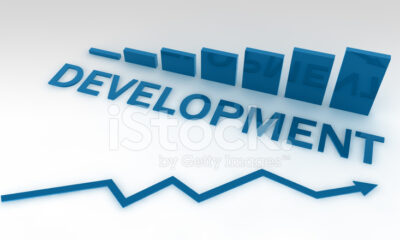
 News & Analysis2 years ago
News & Analysis2 years agoThe Definition, Aspects and Theories of Development
-
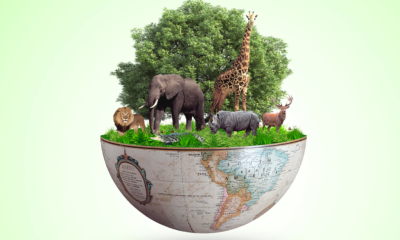
 News & Analysis2 years ago
News & Analysis2 years agoThe Definition and Scope of Biodiversity
-
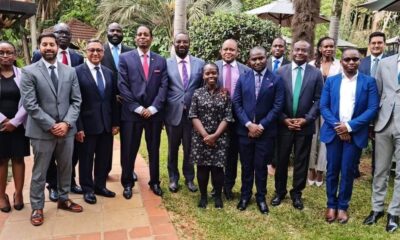
 News & Analysis2 years ago
News & Analysis2 years agoTHE TOP 200 ARBITRATORS IN KENYA 2022
-

 News & Analysis9 months ago
News & Analysis9 months agoThe Role of NEMA in Pollution Control in Kenya
-
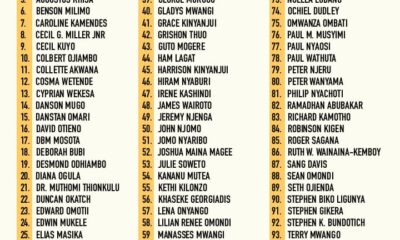
 Lawyers1 year ago
Lawyers1 year agoTHE LAWYER AFRICA Top 100 Litigation Lawyers in Kenya 2023
-

 News & Analysis2 years ago
News & Analysis2 years agoRole of Science and Technology in Environmental Management in Kenya
-
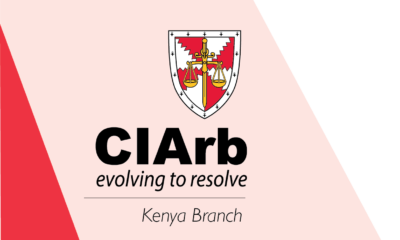
 News & Analysis9 months ago
News & Analysis9 months agoHow to Become an Arbitrator in Kenya



